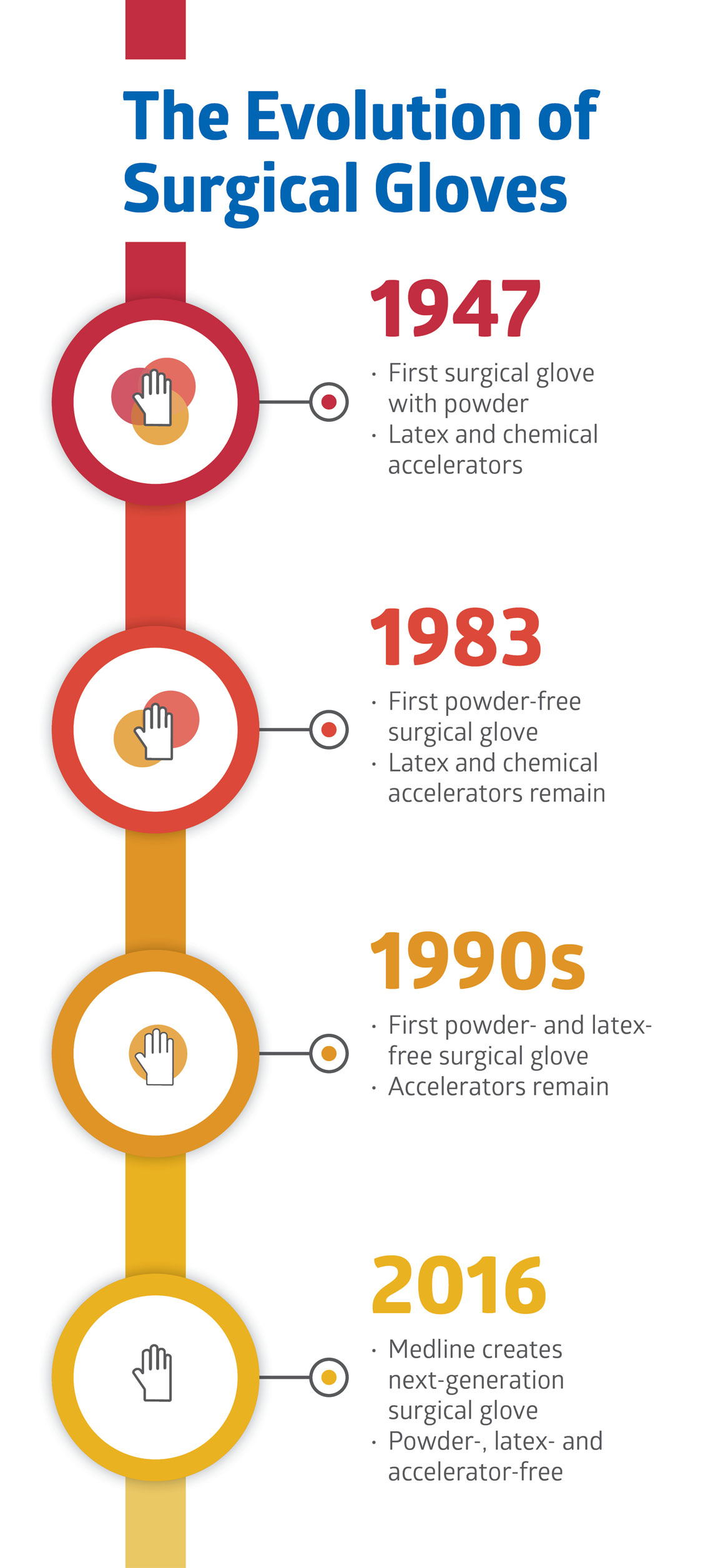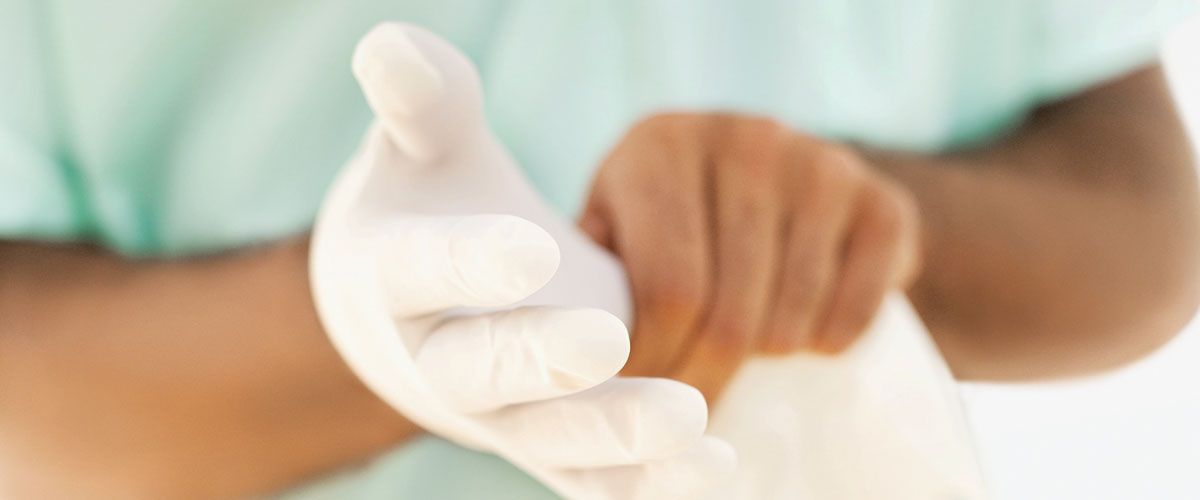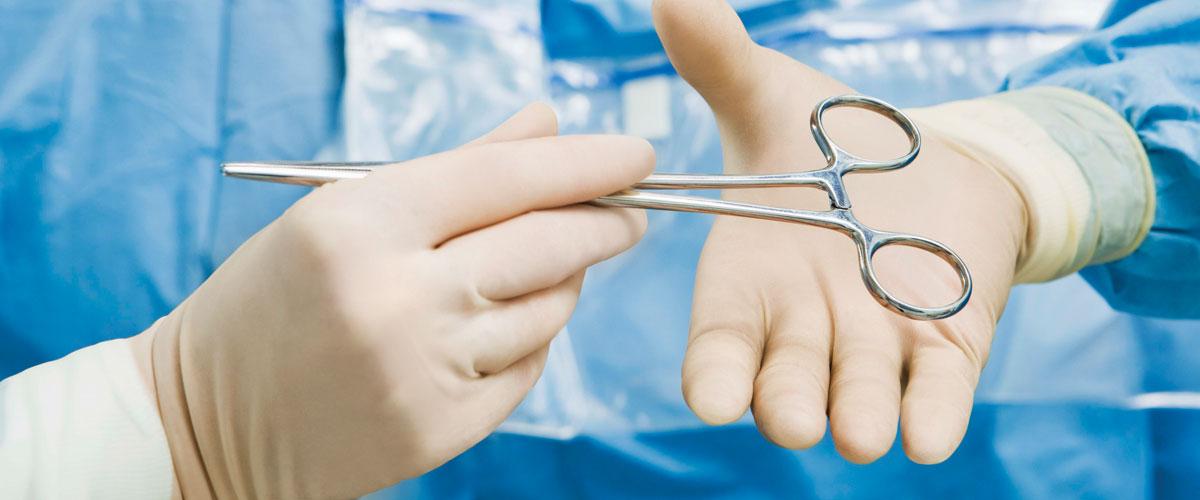The quest to find an effective alternative to powdered and latex-based gloves
Years ago, all surgical gloves were made from latex and included powder to assist in donning. That was the case until it was discovered we should avoid powder because it can cause complications that compromise skin integrity. We’ve seen the extent of this in a previous blog, where we talked about their risks and alternatives. And from that point on, more and more surgical gloves were being made with a polymer coating instead of powder.
Nevertheless, at this time, most gloves are still being made from latex. But as latex allergies become more prevalent (because increased exposure to latex increases the risk of latex allergies), the demand for latex-free surgical gloves increases.
While the first latex-free material that was widely used for surgical gloves, neoprene, is a good alternative, its properties are not as refined as latex. Neoprene is more rigid than and generally not as comfortable to wear as latex. It also has more of a chemical smell. Those factors, in addition to more people wanting a better latex-free surgical glove alternative, resulted in the introduction of polyisoprene gloves to the market. This material is molecularly almost identical to latex and its properties are better than those of neoprene. In fact, high-quality polyisoprene gloves are almost indistinguishable from latex, and some people even prefer them. This is because they have all the benefits of latex gloves without the risk of occupational skin allergies.


Risk assessments of the use of chemical accelerators
Despite the above-mentioned differences amongst latex, neoprene, and polyisoprene, there is one negative characteristic that they share when used to produce surgical gloves. Most of those gloves are made with chemical accelerators. These chemicals are used during manufacturing to help bind materials and speed up the glove-making process. However, some people are, unfortunately, allergic to these chemicals, which can lead to occupational skin allergies and skin breakdown. As with latex, increased exposure equals increased risk of allergies.
While steps are taken—before packaging gloves—to wash away residue of these chemicals and test each glove to make sure the chemicals are below detectable levels during manufacturing, there is still the risk (though small) of developing an allergic reaction. So, how can we prevent latex allergies?
Latest technical improvement to fight occupational contact dermatitis
After several risk assessments, glove manufacturers started making accelerator-free gloves. Still, these represent a small percentage of all surgical gloves on the market. But there is value in them being available for people who need them and knowing they exist. Additionally, similar to what we’ve seen with the reduction in the production and use of powdered and latex-based gloves, it is reasonable to believe more and more people will start to use accelerator-free gloves.
In response, as an innovative manufacturer and supplier of various medical solutions, Medline offers three types of gloves to combat the material-derived and chemical-related problems that contribute to common skin conditions. Notably:
- All Medline gloves are powder-free
- Over half of all glove options on offer are latex-free
- There is, so far, one accelerator-free surgical glove option available.
Much has changed over the last half-century in regards to surgical gloves, and this evolution has been interesting. However, it is even more exciting to think of what the future holds!


Joe Moriarty
Associate Product Manager Exam & Surgical Gloves, Medline Europe
Joe, originally from the Chicago area in Illinois, has a Bachelor of Arts from the University of Iowa, and has been living and working in the Netherlands for almost 5 years. He started out in Medline’s Flex Pool programme at the US-based headquarters, and later transitioned to working in the gloves division in Europe.



